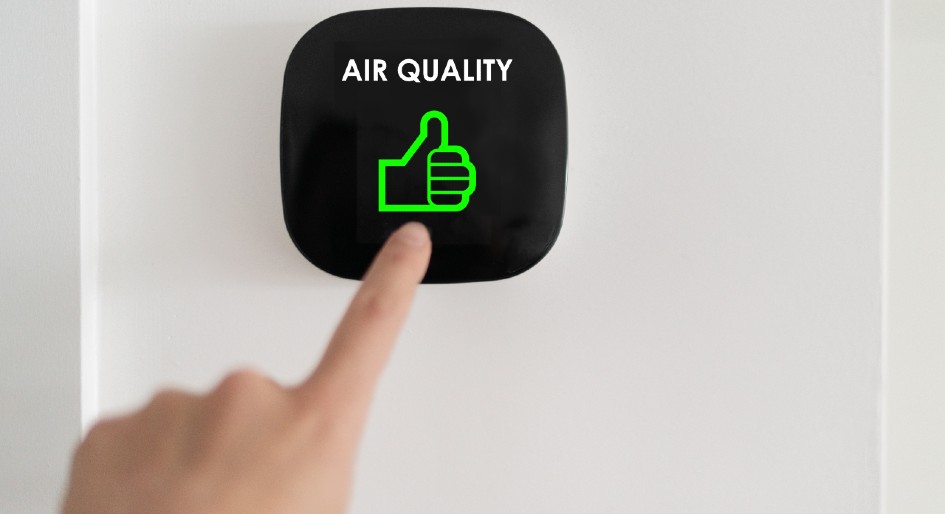Offices have had to manage their own indoor air quality standards until recently. In the absence of guidelines and uniform benchmarks, providing a definitive answer to “is my indoor air quality good?” has been, at best, subjective and, at worst, impossible. Pre-COVID, unless it was an industry requirement, few people were likely asking how healthy the air was.
With ASHRAE’s July issuance of Standard 241, “Control of Infectious Aerosols,” facility managers and building operators now have some guidance on this front.
Here’s ASHRAE’s introduction and high-level definition of Standard 241:
“ASHRAE Standard 241, Control of Infectious Aerosols, establishes minimum requirements to reduce the risk of disease transmission by exposure to infectious aerosols in new buildings, existing buildings, and major renovations. Use of this standard would reduce exposure to SARS-COV-2 virus, which causes COVID-19, influenza viruses and other pathogens that cause major personal and economic damage every year. Standard 241 provides requirements for many aspects of air system design, installation, operation, and maintenance.”
For those less familiar with the guidelines, here is the standard broken down. First, let’s take a brief look at how indoor air quality has been managed up until now
“Just Turn Up the HVAC”
Before ASHRAE Standard 241, there was a lack of specific guidelines regarding the management of infectious aerosols within indoor environments. This lack of standards includes various public health settings, such as corporate offices, schools, hospitals, and government facilities.
Over the years, building owners and operators have faced the ongoing challenge of finding efficient ways to monitor and regulate air quality while reducing the potential for disease transmission. This has required a continuous pursuit of solutions that can consistently and reliably address these concerns.
Prior to the introduction of ASHRAE Standard 241, the most common methods for improving indoor air quality included ventilation, air filtration, surface disinfection, and upper-room ultraviolet germicidal irradiation (UVGI) technology. However, due to the absence of a consensus on implementing these methods, there has been a lack of reliable ways to compare or establish benchmarks for their effectiveness.
Despite their noble intentions, many of these air quality approaches are not without their limitations. Natural ventilation isn’t always an option and mechanical ventilation isn’t designed for infection control; room air cleaners aren’t sufficiently robust as they are flow limited; and surface disinfection is dependent upon cleaning and disinfection procedures, and staff, both of which may not exist.
Which brings us to now. With ASHRAE’s official recognition that past clean air practices were not acceptable, Standard 241 provides a much-needed framework for the control of infectious aerosols in indoor environments.
This standard represents a breakthrough in public health and has the potential to drastically reduce the spread of infectious diseases in places where it’s needed most. We expect to hear more about Standard 241 in the coming months and year, but for now, know that this is the first step to improving indoor air quality.
Meeting ASHRAE Standard 241
It’s important to note that the new ASHRAE Standard 241 presents a new formula for calculating equivalent outdoor air. This represents a change in both the target CFM per occupant and the math to achieve that target.
For example, in the old standard (62.1), only true outdoor air brought in by the HVAC system could achieve the target. In the new 241 standard, equivalent clean airflow accounts for true outdoor air plus clean air delivery from filtration both induct and in-room, UV-C, and other mitigations.
So, how can facilities meet the new ASHRAE Standard 241? Among the most common mitigation methods, U-VC technology has proven to be the most effective way to disinfect air. Running an HVAC system at 100 per cent or even 70 to 80 per cent capacity won’t achieve the necessary limit set forth in the new standard. Typical filters don’t provide enough eACH, and most portable air filters found in HVAC systems are inadequately sized for the volume of air they clean.
In contrast, UVGI disinfects large volumes of air by emitting ultraviolet light that kills pathogens. This process does not require moving, filtering, or otherwise treating the air — or interfering with the people inside the room. As a result, UVGI can efficiently add more than 10 eACH per hour to a space — the equivalent of changing the air in a room every six minutes with a single device. Upper-room systems can be easily added to plans for a new building or retrofitted into an existing building as seen in some public schools across North America.
As humans, we spend 90 per cent of our time indoors. Keeping the air we breathe clean is critical for our collective well-being. ASHRAE Standard 241 is a step in the right direction.
Jennifer Nuckles is the CEO of R-Zero.




